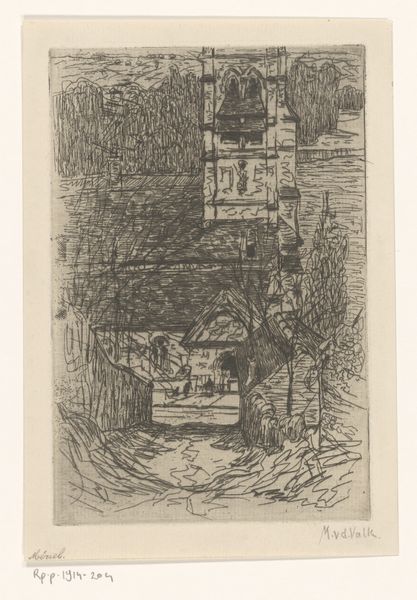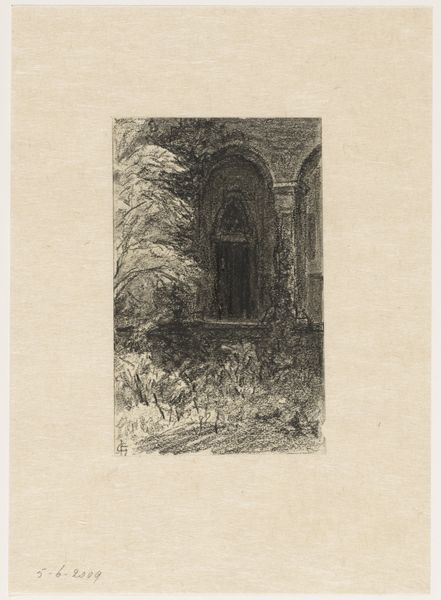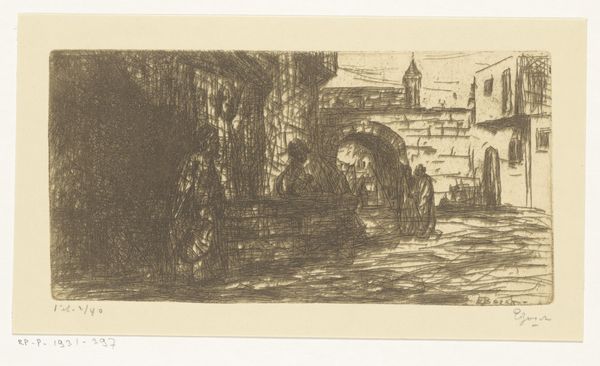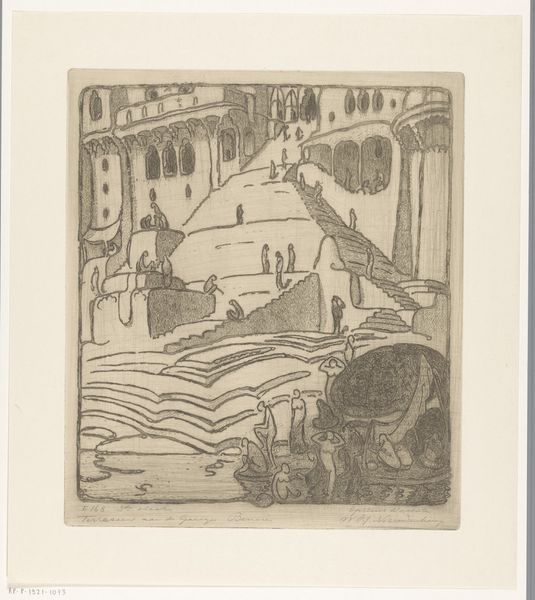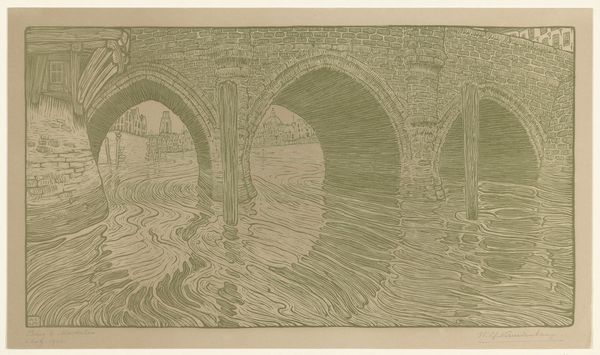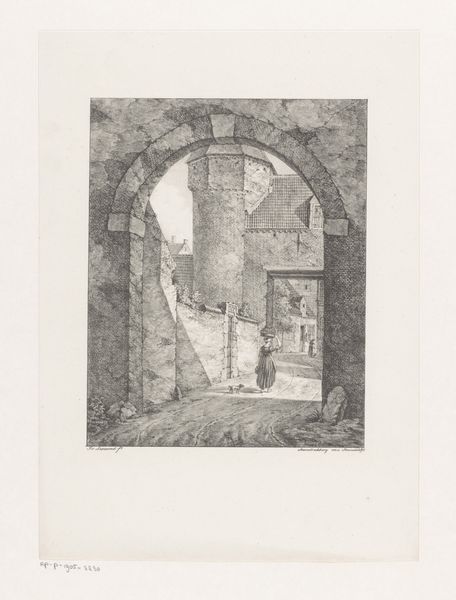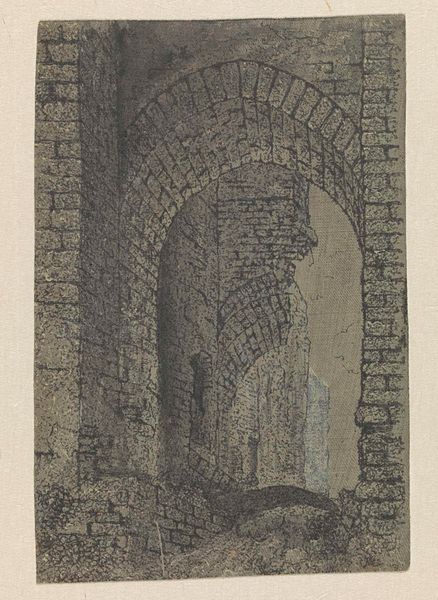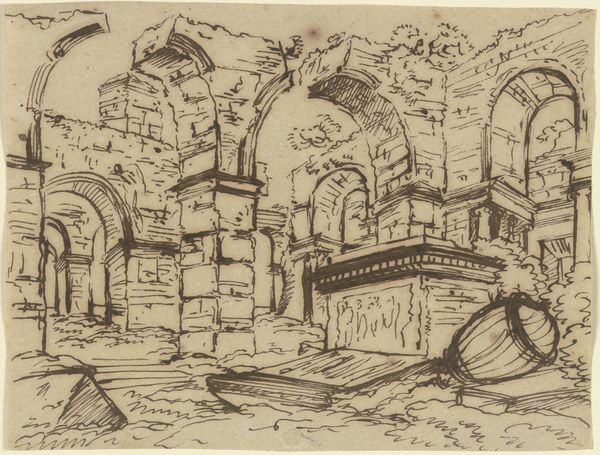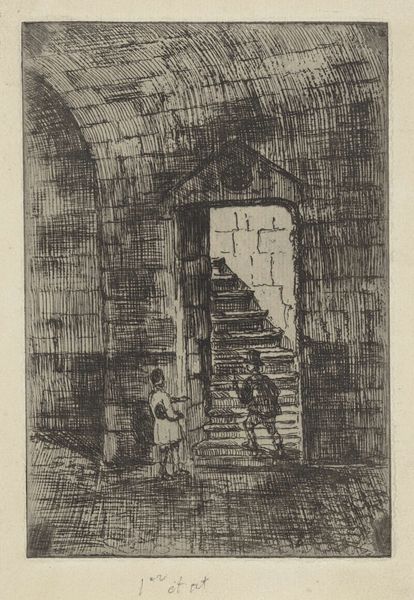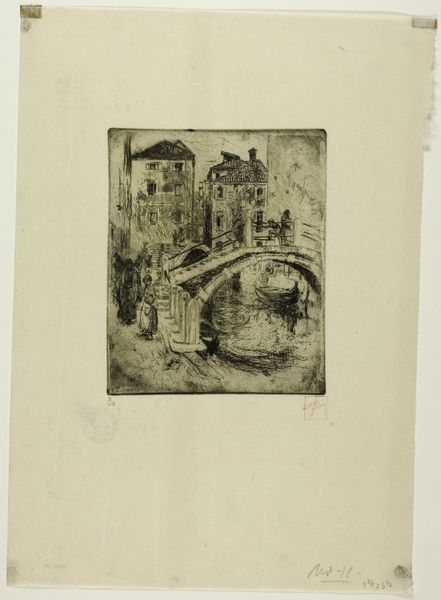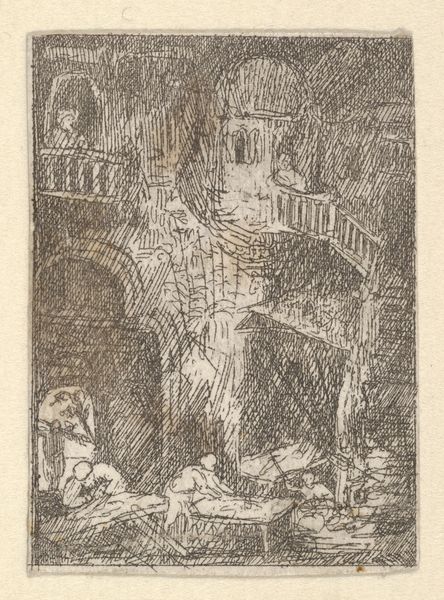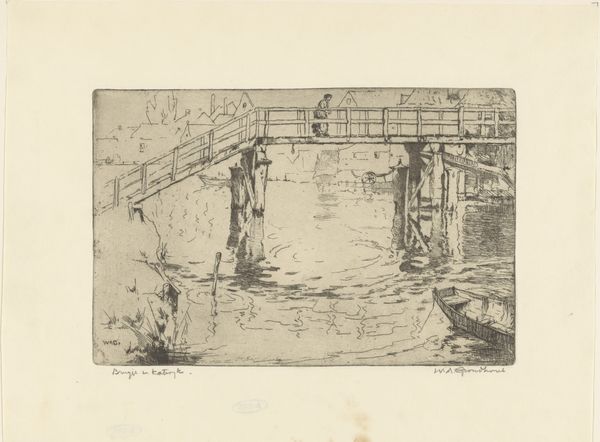
print, woodcut
#
art-nouveau
# print
#
pen illustration
#
landscape
#
geometric
#
woodcut
#
line
Dimensions: height 108 mm, width 131 mm
Copyright: Rijks Museum: Open Domain
Editor: This woodcut print, "Brug te Mechelen" by Wijnand Otto Jan Nieuwenkamp from 1899, feels almost like a stage. The intricate linework draws me into a shadowed world under the bridge. What stories do you think this work tells? Curator: This print invites us to consider the rapid industrial and social changes occurring at the turn of the century. Notice how Nieuwenkamp juxtaposes the natural fluidity of the water with the rigid architecture of the bridge. Does this contrast suggest anything about the artist's perception of progress? Editor: It makes me think about the tension between human construction and the natural landscape, maybe a commentary on their uneasy coexistence. Curator: Precisely! And consider the choice of a woodcut, a medium often associated with folk art and accessibility. Could Nieuwenkamp be making a statement about democratizing art, bringing it closer to the people and representing the landscapes they inhabit? Who, at the time, was facing the biggest impacts from these tensions, and where were they? Editor: That’s a fascinating point. The darker tones and sharp lines could represent the working class overshadowed by industrial advancement in urban areas, as I understand from my readings of the period. Curator: The architectural elements dominate the landscape. Might this piece speak to the political realities of land ownership and power dynamics inherent in urban development? What hidden assumptions do we hold about our environment, based on how art portrays the time? Editor: I hadn’t thought of it that way before. Seeing it through that lens makes it so much richer! Thanks for the new perspective! Curator: Art should always be in dialogue with social critique; only then can it speak to future generations. It's about connecting the visual to the visceral and the historical, in ways that can change minds, hopefully for the better.
Comments
No comments
Be the first to comment and join the conversation on the ultimate creative platform.
